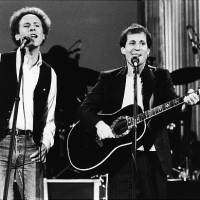The term D-Day referred to the day of the actual landing in the Normandy landings, codenamed Operation Neptune, were the landing operations of the Allied invasion of Normandy, in Operation Overlord, during World War II. The landings commenced on Tuesday, 6 June 1944 (D-Day), beginning at 6:30 am British Double Summer Time (GMT+2). Now in 2014, we remember this day on the 70th Anniversary.
The landings were conducted in two phases: an airborne assault landing of 24,000 British, US and Canadian airborne troops shortly after midnight, and an amphibious landing of Allied infantry and armoured divisions on the coast of France starting at 6:30 am.
Surprise was achieved thanks to inclement weather and a comprehensive deception plan implemented in the months before the landings, codenamed Operation Bodyguard, to distract German attention from the possibility of landings in Normandy.
A key success was to convince Adolf Hitler that the landings would actually occur to the north at the Pas-de-Calais. There were also decoy operations taking place simultaneously with the landings under the codenames Operation Glimmer and Operation Taxable to distract German forces from the real landing areas.
Supreme Commander of the Allied Expeditionary Forces was General Dwight D. Eisenhower while overall command of ground forces (21st Army Group) was given to Field Marshall Bernard Montgomery.

U.S. Gen. Dwight D. Eisenhower, left, supreme commander of the Allied forces, and British Field Marshal Bernard Montgomery, right
The operation, planned by a team under Lieutenant-General Frederick Morgan, was the largest amphibious invasion in world history and was executed by land, sea and air elements under direct Anglo-American command with over 160,000 soldiers landing on 6 June 1944: 73,000 Americans, 61,715 British and 21,400 Canadians. 195,700 Allied naval and merchant navy personnel in over 5,000 ships were also involved. The invasion required the transport of soldiers and materiel from England by troop-laden aircraft and ships, the assault landings, air support, naval interdiction of the English Channel and naval gunfire support. The landings took place along a 50-mile (80 km) stretch of the Normandy coast divided into five sectors: Utah, Omaha, Gold, Juno and Sword.






 Check out my other blog
Check out my other blog I'M PUBLISHED
I'M PUBLISHED I'm Published Again
I'm Published Again









Thanks Maryanne. It was the beginning of the end of tyranny !
LikeLike
It sure was. I can’t imagine the world if Germany prevailed.
LikeLike
I wouldn’t want to think if Germany prevailed. I also cannot believe it is 70 yrs ago. Most of these men are moving into the pages of history. I have nothing but the utmost respect for all these men
LikeLike
Yes there are not that many WW2 veterans still with us. It is so important to get there stories documented. My dad’s twin, a WW2 veteran died a year ago at age 90.
LikeLike